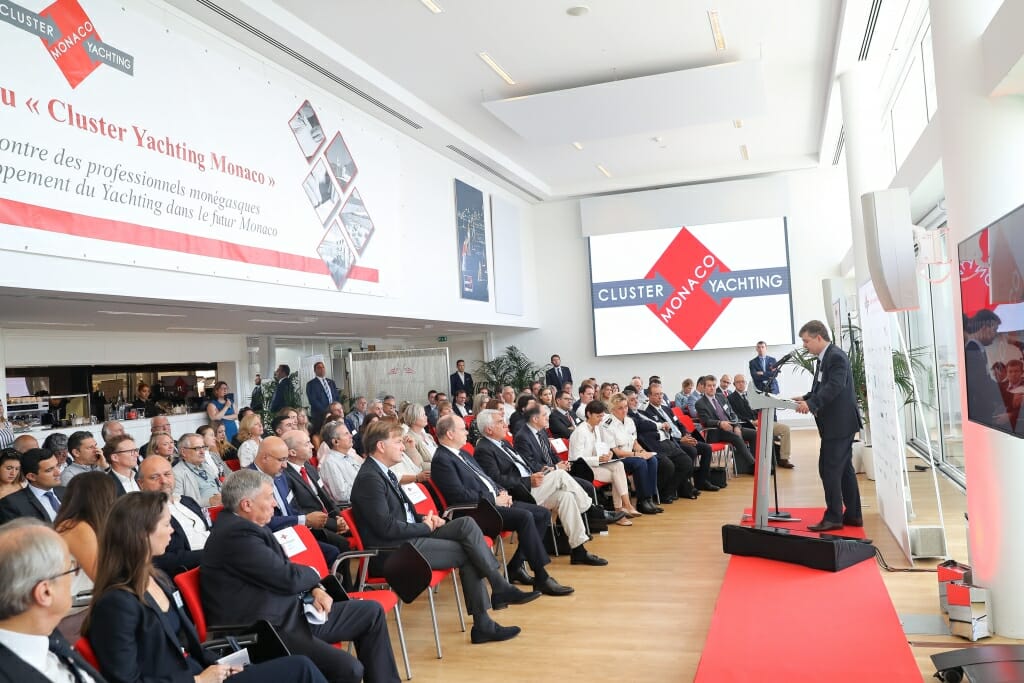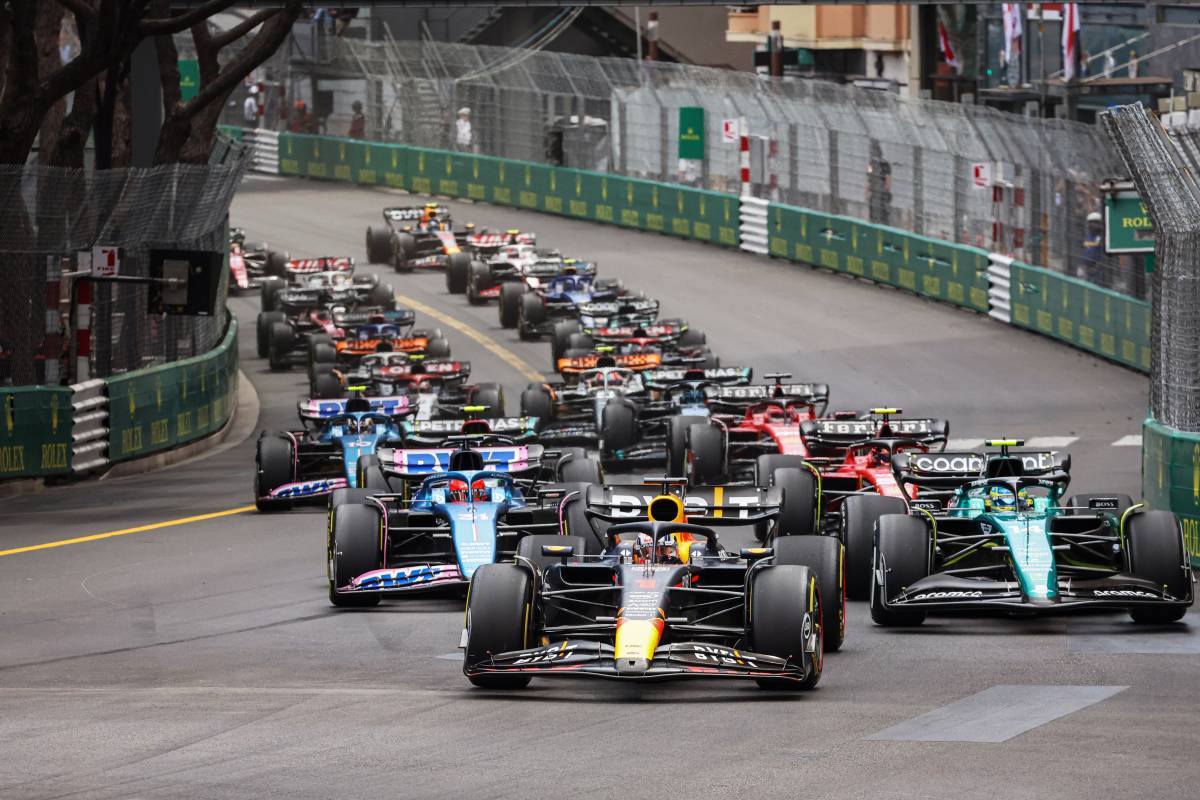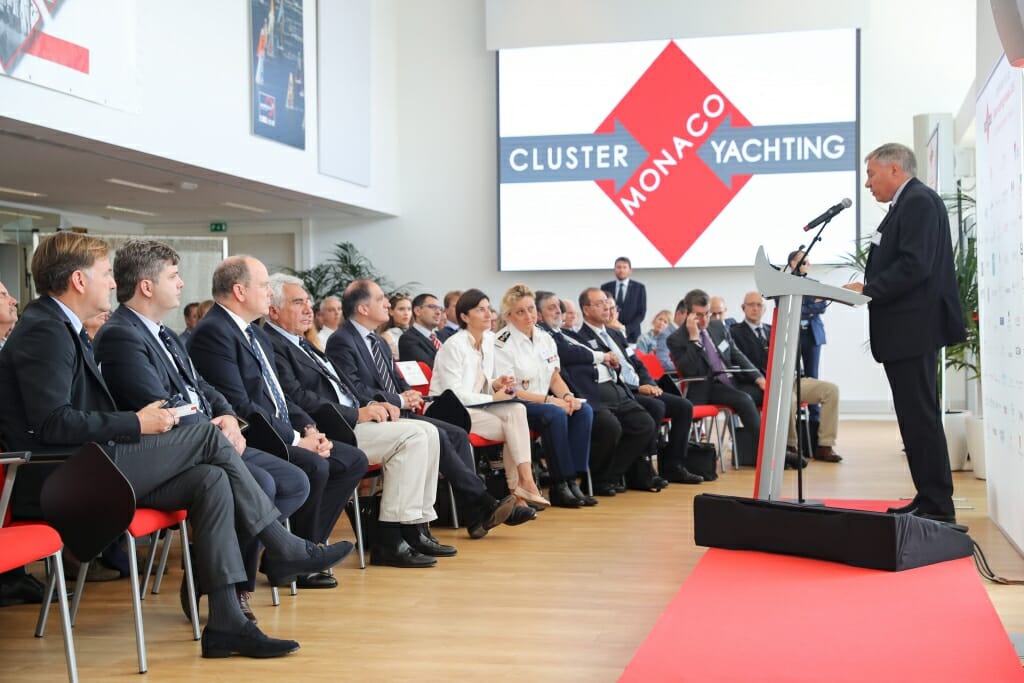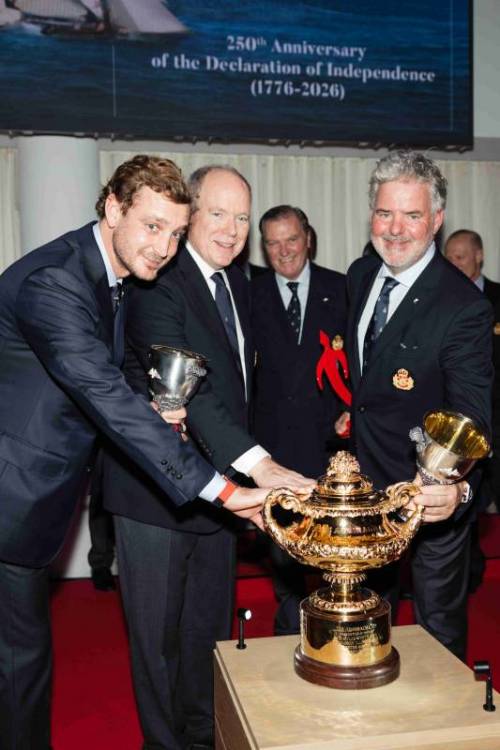Held under the Presidency of HSH Prince Albert II, the 3rd Cluster Yachting Monaco Rendezvous gathered 250 professionals from the sector in the Yacht Club de Monaco to discuss cybersecurity as it relates to yachts.
Bernard d’Alessandri, YCM General Secretary and President of the Cluster Yachting Monaco, reminded the audience of the Cluster’s key role in “uniting professionals to promote Monaco as a port of call and the Monaco Capital of Yachting concept. Yachting is a big industry; some boats hire up to 60 crew from a whole range of profiles: it is why we decided to set-up a dedicated centre here in Monaco to train young people in Luxury Yachting professions.”
Taking stock
Cluster Yachting Monaco Vice-President, Edouard Mousny, opened the debate with figures testifying to a buoyant sector: “Yachting represents 5% of revenue in the Principality, it is the 4th largest sector and we’ve seen the number of jobs it generates rise to 1,500”. The Cluster is the nerve-centre of the industry, hence why the number of initiatives has multiplied, such as the Luxury and Management Master, in collaboration with the International University of Monaco, and its presence at key events such as the Dubai Boat Show, Singapore Yacht Show and the Marine Equipment Trade Show, Amsterdam.
The digital challenge
“Yachting is a combination of dreams and reality, and the reality today is that we face challenges from new technologies and the digital transformation,” said Jean Castellini, Monaco’s Minister of Finance and Economy. Rear Admiral Dominique Riban, Director of digital security agency AMSN (Agence Monégasque de Sécurité Numérique) compared navigation at sea with navigation on the web, both of which entail dangers one must be aware of.
Christian Tafani from Nice-Sophia Antipolis University highlighted the fact that for a long time the yachting world has escaped digital age threats: “But today, IT technology is omnipresent and systems more vulnerable, including those on boats from spyware, information theft, hacking, etc.” he explained. “Modern-day hackers can access embedded systems using devices that are available to everyone at a lower cost. Everyday objects are increasingly connected, such as refrigerators, air con systems and even photocopiers. They are all potential entry points for hackers.”
Rob Myers, Senior Director Maritime Market Development at Inmarsat, SSI-Monaco Partner, discussed services available for sending alerts to rescue boats in distress and systems to protect and detect threats.

Drones: a new threat to privacy
One of the most sought-after gadgets that also represents a threat is the drone. Light and quiet it can take high resolution images and zoom in on subjects from 200m away. Drones also pose a threat to privacy, as they can capture images of the deck and a yacht’s interior and are a potential security risk. For yachts with helipads, a drone going at 90km/h could cause serious damage if they collided. “According to the statistics, 40% of the population have already piloted a drone, a figure that will continue to rise as the item becomes more popular,” believes Joannes Pinl, CEO of Marss Group. Security shield systems that scramble signals are a way to fend off approaching drones.
How to better protect ourselves
Faced with so many threats, there are solutions. José Patrick Boé, a cybersecurity expert at RMCI, Risk&Co Monaco, cited numerous examples of attacks such as hacking into GPS data to divert a boat without the crew realising it, infecting the onboard computer to take control of the ship, and using scramble devices to interrupt distress calls. “It is of utmost importance to determine which measures need to be taken to combat threats and make your boat less vulnerable. Securing the infrastructure, compartmentalising networks and installing anti-virus, anti-spyware packages and fire walls are all part of the solution.”
Security is key if we are to trust digital technology. Karim Methia, Chief Security Information Officer at Monaco Telecom says: “Cyberattacks are on the increase and can be costly, both to protect yourself and recover from an attack. Do not underestimate cyber security and make sure you allocate part of your budget to it.”
Lawyer Henri R. Najar stressed the importance of certification companies like ABS who ensure that a vessel is complying with the regulations on security and minimising risks.
Given how important the yachting industry is to Monaco’s economy, shipping and port security are priorities. Some 230 cruise ships call into the Principality every year. Isabelle Castelli, Deputy Chief of the Maritime Police outlined the measures in place to secure and make safe Monaco’s two harbours. They include prevention, upgrading ways to detect threats at sea, in the air and ashore, and unannounced inspections of commercial vessels to check navigation and telecommunications equipment.
Is yachting still fun?
Yacht designer Espen Oeino, Cluster Yachting Monaco Vice-President, talked about new trends. In his opinion they “represent the future of yachting, like expedition yachts with a scientific vocation which combine philanthropy and adventure. They allow owners to reach new destinations that were still not accessible with yachts from not that long ago, and to explore unknown territories.” The new generation of owners, the millennials, consume in a different way. They want their purchases to have more meaning, but also want to have more fun. They love connected items and “toys” for their yachts, hence why new gadgets appear on the market every year: submarines, jetsurfs, seabobs, jetpacks…etc. in, on and under the water and in the air. It’s why the industry can say that yachting is still fun!
Alexandre Bayeux, an expert at Aturys Communication Security, concluded: “Users cannot control everything. We know there are threats out there, but as long as attacks don’t concern us personally we view security and its tools as a restriction.” The goal now for the cyber security profession is to make these tools more user friendly. Yachting needs to keep pace with technological advances while knowing how to protect itself: training crew and raising awareness among owners of 2.0 threats are the priorities.









